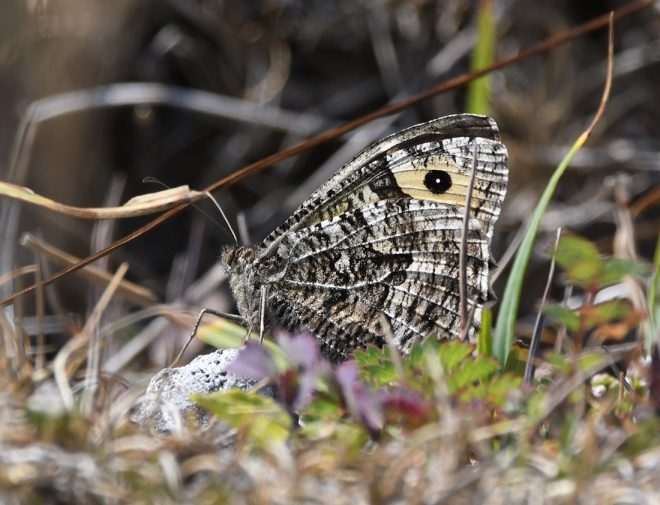Ranger report: Saving an enigma
December 10, 2021

Ranger Tim Squire gives an update on efforts to save the grayling from local extinction.
 The grayling is one of the hardest butterflies to spot. Not only is it one of our most rare and declining butterflies, but it also has what is referred to as ‘cryptic colouration’, meaning it’s a real master of disguise.
The grayling is one of the hardest butterflies to spot. Not only is it one of our most rare and declining butterflies, but it also has what is referred to as ‘cryptic colouration’, meaning it’s a real master of disguise.
The National Park Authority has been working alongside Butterfly Conservation to save this important species.
The grayling is a rare species by any measure on its usual habitat of acid grassland and lowland heath but it was also once widespread on the chalk. However, the “chalk variety” of the grayling now survives in just a single colony in the UK, here on the South Downs. This colony, in a valley in East Sussex, was down to maximum day counts in the low twenties. Recent conservation work to improve the habitat has led to a small increase in the past two years and this summer saw a high count of 49.
This is obviously still a perilous situation for the grayling butterfly. A species cannot survive with such a small population at only one site, but the early signs are encouraging.
So just how have we managed to create more favourable conditions for the grayling? This insect survives only on the very hottest chalk grassland slopes that have short turf and areas of bare ground where they can bask in the sun and lay their eggs on tiny tufts of sheep’s fescue grass that sprout up. With a recent crash in the rabbit population, bare ground, or rabbit scrapes, have had to be created artificially by the ranger and volunteer teams. There have also been ponies on site to graze the thick tor grass that crowds out the finer grasses and chalk grassland flora. The farmer now has his own herd of Exmoor ponies to help keep the site in good condition.
Hopefully, when dispersing, butterflies will hop over the top of the hill and find suitable habitat to start a second colony. In the other direction lies Lullington Heath National Nature Reserve. Grayling used to be present here but were lost earlier this century. The National Park is working in partnership with Natural England and South East Water, which owns the reserve, to complete major works removing large areas of gorse. I’m hopeful that this charming butterfly will return here too one day J
